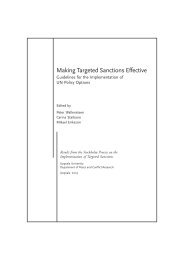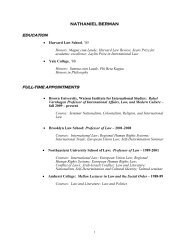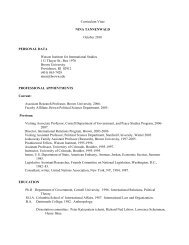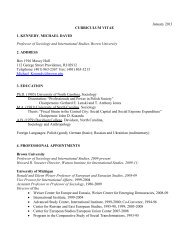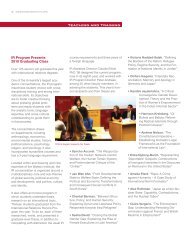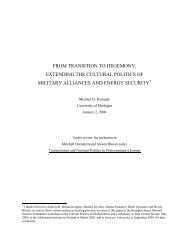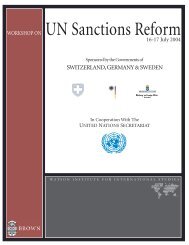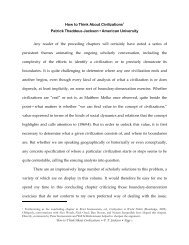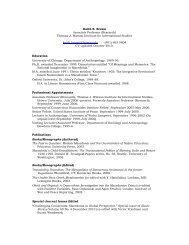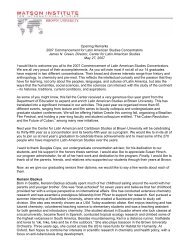op 18 front pages-converted - The Watson Institute for International ...
op 18 front pages-converted - The Watson Institute for International ...
op 18 front pages-converted - The Watson Institute for International ...
Create successful ePaper yourself
Turn your PDF publications into a flip-book with our unique Google optimized e-Paper software.
Moreover, the beneficiary p<strong>op</strong>ulation expanded as, with<br />
each passing month, the impact of the war on local p<strong>op</strong>ulations<br />
became more negative. As of early 1993, about eighty<br />
percent of the refugees (380,000) and displaced persons<br />
(361,000) in Croatia were provided shelter by host families.<br />
<strong>The</strong> balance resided in hotels (80,000) and collective centers<br />
(55,000). By April 1993 in Serbia and Montenegro, government<br />
figures placed the numbers of those accommodated by host<br />
families (“...relatives, friends, and anonymous humane<br />
pe<strong>op</strong>le...”) at 96.9 percent, or 572,000 persons. <strong>The</strong> remaining<br />
3.1 percent, or <strong>18</strong>,000 persons, were housed in collective centers<br />
(“...old school buildings, children’s hostels, barracks, old<br />
hotels, <strong>for</strong>mer military barracks, etc....”).<br />
Accommodating the displaced largely with families rather<br />
than in institutions made the newcomers more dependent on<br />
the resources of their host families and more difficult to reach<br />
with generalized assistance programs. As the war took an<br />
increasing toll on the economies of the region, those families<br />
became less able to meet the needs of their guests.<br />
In Serbia, the worsening situation reflected not only the<br />
war but also the imposition of international economic sanctions.<br />
“<strong>The</strong> general economic collapse and the blockade of<br />
commercial traffic,” explained the <strong>for</strong>eword to the U.N.’s<br />
Consolidated Appeal <strong>for</strong> early 1994, “have created a situation<br />
in which those who are not refugees or displaced are often in<br />
as great a need as those internally or externally displaced.”<br />
Included within the target p<strong>op</strong>ulation, along with refugees<br />
and displaced persons, were “other affected persons” and<br />
“social cases,” that is, the most needy among the local resident<br />
p<strong>op</strong>ulation.<br />
During the first six months of 1993, the target p<strong>op</strong>ulation<br />
throughout the <strong>for</strong>mer Yugoslavia swelled to 4,259,000, including<br />
837,000 refugees, 1,634,000 displaced persons, and<br />
1,788,000 other affected persons. This was the first time a U.N.<br />
appeal included social cases in Croatia (176,000) as well as in<br />
Serbia and Montenegro (150,000). <strong>The</strong> figures were conservative.<br />
Other estimates held that 90 percent of the resident<br />
Serbian p<strong>op</strong>ulation, <strong>for</strong> example, was unable to meet basic<br />
food needs. <strong>The</strong> situation deteriorated markedly with each<br />
successive visit by the team in March, June, and September 1993.<br />
13



